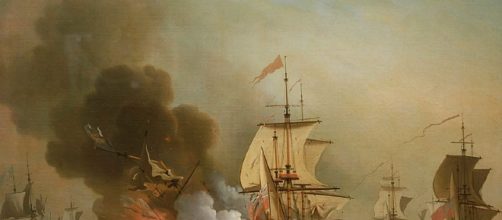It is a story from an adventure novel. On Monday, oceanic researchers in Colombia told the media that the treasure-filled shipwreck found back in 2015 has an estimated value of $17 million. Dubbed the "holy grail of shipwrecks," Colombian researchers and members of the Colombian Navy originally used American-made autonomous vehicles to unearth the remains of the 18th century Spanish galleon, the "San Jose." Inside the shipwreck, researchers uncovered gold, silver, emeralds, and other priceless treasures.
More about the findings
The financial worth of the findings was kept under wraps for years out of respect to the Colombian government.
Also, several countries and private companies are currently fighting over who has the right to claim the treasure. UNESCO, the UN's world heritage agency, called on Colombia this week to refrain from "exploiting" this major find for financial gain. The Woods Hole Oceanographic Institution (WHOI), the Massachusetts-based company that built the autonomous vehicles used in the excavation, claims that Colombia plans on using the artifacts as part of a forthcoming museum.
The high-tech vehicle used in the 2015 search is known as the REMUS 6000, a type of underwater robot that also helped to take pictures of the wreckage of Air France Flight 447, which crashed off the coast of Brazil in 2009.
History
The San Jose was sunk off the coast of Colombia on June 8, 1708. At the time, the ship was engaged in a naval battle with British ships. Aboard the San Jose were about 600 people, many of whom were sailors charged with manning the galleon's sixty-two guns. The fate of the San Jose was forever etched in history by the British painter Samuel Scott, whose oil painting "Action off Cartagena, 28 May 1708" shows the San Jose and other Spanish ships engaged in battle with five British ships under the command of Royal Navy Admiral Sir Charles Wagner.
Such naval fighting near the Spanish and British colonies in the Americas was mirrored by further fighting back in Europe. The San Jose and other Spanish treasure ships were sunk as part of the War of Spanish Succession, which saw the British, Dutch, and Holy Roman Empire try to thwart the French Bourbon dynasty from taking the crown of Spain.
Ultimately, the Spanish Empire gained a new king, but had to relinquish its claim to The Netherlands, Naples, Milan, Sardinia, and Savoy.
Of all the contestants, the burgeoning British Empire won the most, with France recognizing British supremacy in Newfoundland, Rupert's Land, Acadia, and Saint Kitts.


